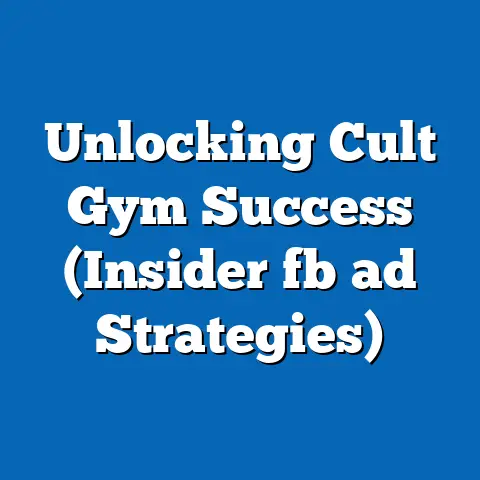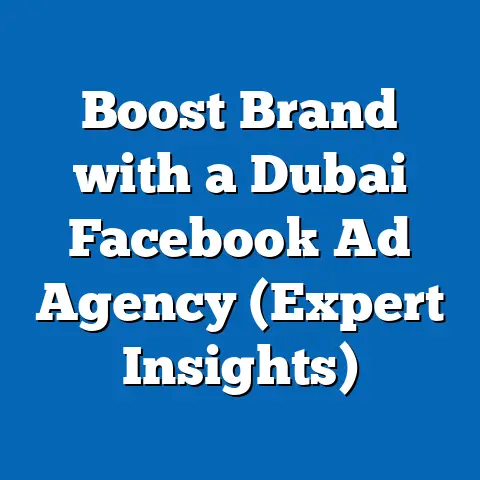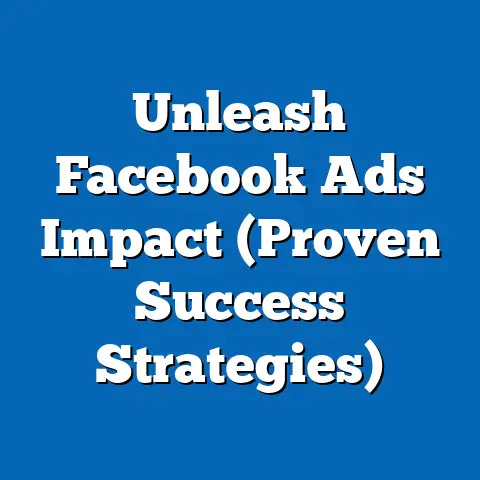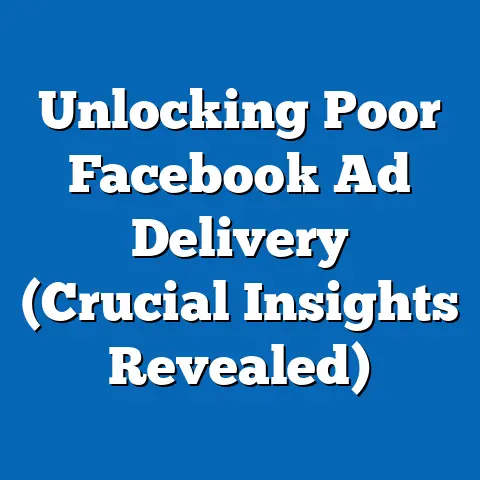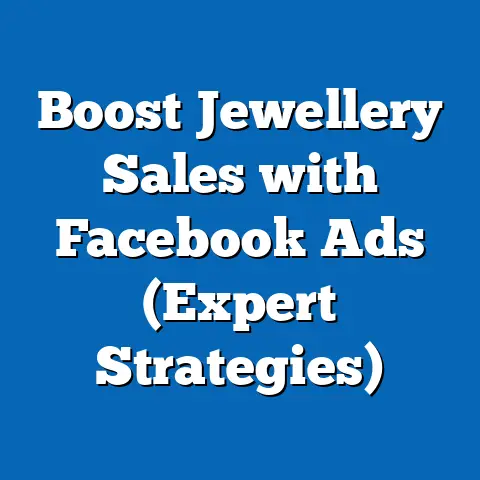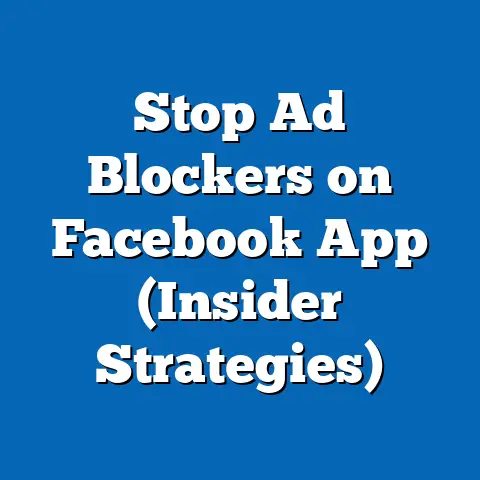Effective Facebook Lead Gen Ads That Convert (Pro Tips)
Are you ready to unlock the full potential of Facebook ads and transform casual browsers into loyal customers? I know, it sounds like a dream, but trust me, with the right approach to Facebook Lead Generation Ads, it’s absolutely achievable. Over the years, I’ve seen countless businesses, big and small, skyrocket their lead generation efforts using this powerful tool. But let’s be honest, it’s not always a walk in the park. That’s why I’m here to share some pro tips that will help you create Facebook Lead Gen Ads that not only grab attention but also convert like crazy.
Understanding Facebook Lead Generation Ads
So, what exactly are Facebook Lead Generation Ads? Unlike traditional ads that redirect users to an external website, these ads allow users to submit their information directly within the Facebook platform. Think of it as a mini-landing page built right into Facebook. This streamlined process reduces friction, making it incredibly easy for people to sign up for your offers.
Why is lead generation so crucial? Well, in today’s competitive digital landscape, simply having a website isn’t enough. You need to actively capture the contact information of potential customers so you can nurture them through the sales funnel. Leads are the lifeblood of any successful business, and Facebook provides an unparalleled opportunity to generate them.
The unique advantages of using Facebook for lead generation are undeniable. With over 2.9 billion active users, Facebook offers an enormous pool of potential customers. But it’s not just the sheer size of the audience; it’s the incredible targeting capabilities that make Facebook so effective. You can target users based on demographics, interests, behaviors, and even custom audiences created from your existing customer data. This level of precision ensures that your ads are reaching the people who are most likely to be interested in your products or services.
Takeaway: Facebook Lead Generation Ads offer a streamlined way to capture leads directly within the platform, leveraging its massive user base and precise targeting capabilities.
Crafting Compelling Ad Copy
Now, let’s talk about the heart of your ad: the copy. Even the most visually stunning ad will fall flat if the copy doesn’t resonate with your target audience. Effective ad copy is clear, concise, and compelling. It should immediately grab the reader’s attention and clearly communicate the value proposition.
Here are the key elements of winning ad copy:
- Clarity: Make sure your message is easy to understand. Avoid jargon or technical terms that your audience may not be familiar with.
- Emotional Appeal: Connect with your audience on an emotional level. Highlight the benefits of your offer and how it will solve their problems or fulfill their desires.
- Strong Call to Action (CTA): Tell people exactly what you want them to do. Use action-oriented language like “Sign Up Now,” “Get Your Free Guide,” or “Learn More.”
I remember working with a local fitness studio that was struggling to generate leads. Their initial ad copy was generic and didn’t really speak to their target audience. After some brainstorming, we crafted a new ad with the headline: “Finally Lose Those Last 10 Pounds!” This immediately resonated with their ideal customer, and their lead generation rate doubled within a week.
Here’s an example of successful lead gen ad copy:
Headline: Get Your Free Guide to Mastering Facebook Ads
Body: Struggling to get results from your Facebook ads? Download our free guide and learn the secrets to creating high-converting campaigns.
CTA: Download Now
What makes this copy work? It clearly identifies a problem (struggling with Facebook ads), offers a solution (a free guide), and includes a compelling CTA (Download Now).
To tailor your messaging, you need to deeply understand your customer persona. What are their pain points? What are their aspirations? What language do they use? The more you know about your target audience, the better you can craft ad copy that resonates with them.
Takeaway: Craft compelling ad copy that is clear, emotionally appealing, and includes a strong call to action. Understand your customer persona to tailor your messaging effectively.
Designing Eye-Catching Visuals
While the copy is crucial, the visuals are what initially grab people’s attention as they scroll through their Facebook feeds. Think of your visuals as the bait that lures people in.
Here are some tips for choosing the right images or videos:
- Relevance: Make sure your visuals are relevant to your offer and target audience.
- High Quality: Use high-resolution images or videos that are visually appealing.
- Attention-Grabbing: Choose visuals that stand out and capture attention.
- Brand Consistency: Maintain brand consistency in your visuals to build trust and recognition.
I’ve found that using videos tends to perform exceptionally well. People are naturally drawn to movement, and a well-produced video can quickly communicate your message and engage your audience. Short, attention-grabbing videos that showcase your product or service in action are particularly effective.
For example, if you’re promoting a new software product, consider creating a short demo video that highlights its key features and benefits. If you’re a real estate agent, create a virtual tour of a stunning property.
Maintaining brand consistency is also essential. Use your brand colors, fonts, and logo in your visuals to create a cohesive look and feel. This helps to build brand recognition and trust.
Takeaway: Use high-quality, relevant, and attention-grabbing visuals that align with your brand to capture attention and engage your audience.
Targeting the Right Audience
This is where the magic happens. Facebook’s targeting capabilities are truly remarkable, allowing you to reach the people who are most likely to be interested in your products or services.
Here are the main targeting options available:
- Demographics: Target users based on age, gender, location, education, and other demographic factors.
- Interests: Target users based on their interests and hobbies.
- Behaviors: Target users based on their online behavior, such as purchase history and website visits.
- Custom Audiences: Target users who have already interacted with your business, such as website visitors, email subscribers, and existing customers.
- Lookalike Audiences: Target users who are similar to your existing customers.
I’ve had great success using custom audiences and lookalike audiences. By uploading your customer list or website visitor data to Facebook, you can create highly targeted audiences that are more likely to convert. Lookalike audiences allow you to expand your reach by targeting users who share similar characteristics with your best customers.
Segmenting your audiences effectively is also crucial. Don’t just target everyone who might be remotely interested in your product or service. Instead, break down your audience into smaller segments based on their specific interests, needs, and pain points. This allows you to tailor your ad copy and visuals to each segment, making your ads more relevant and effective.
A/B testing different audience segments is essential for refining your targeting strategies. Experiment with different demographics, interests, and behaviors to see which segments perform best. Use the data to optimize your targeting and improve your results over time.
Takeaway: Leverage Facebook’s targeting options to reach the most relevant prospects. Segment your audiences effectively and A/B test different segments to refine your targeting strategies.
Utilizing Lead Magnets
Lead magnets are irresistible offers that entice people to provide their contact information. They are essential for enhancing the effectiveness of your lead gen ads.
Here are some examples of effective lead magnets:
- eBooks: Provide valuable information on a specific topic related to your industry.
- Webinars: Host a live or recorded webinar that offers expert insights and advice.
- Free Trials: Offer a free trial of your software or service.
- Checklists: Provide a step-by-step guide to help people achieve a specific goal.
- Templates: Offer customizable templates that people can use for their own projects.
The key to a successful lead magnet is to offer something that is valuable, relevant, and easy to consume. It should also be closely related to your product or service, so you can effectively nurture the leads you generate.
I’ve found that free checklists and templates tend to be particularly effective. People love quick and easy solutions to their problems, and these types of lead magnets provide just that.
For example, if you’re a marketing agency, you could offer a free checklist for optimizing Facebook ad campaigns or a template for creating high-converting landing pages.
Presenting your lead magnet in an enticing way is also crucial. Highlight the benefits of your offer and make it clear how it will solve the reader’s problems or fulfill their desires. Use compelling visuals and persuasive copy to encourage people to click and sign up.
Takeaway: Use lead magnets to entice people to provide their contact information. Offer something valuable, relevant, and easy to consume, and present it in an enticing way.
Optimizing the Landing Page Experience
Even if you create the perfect Facebook ad, you’ll still lose leads if your landing page isn’t up to par. The landing page is where the conversion happens, so it’s essential to create a seamless and compelling experience for your visitors.
Here are some tips for designing a high-converting landing page:
- Clear Headline: Use a clear and concise headline that immediately communicates the value proposition.
- Compelling Copy: Write persuasive copy that highlights the benefits of your offer and encourages people to sign up.
- Visually Appealing Design: Use a visually appealing design that is easy to navigate and mobile-friendly.
- Optimized Form: Keep your form short and simple, only asking for the essential information you need.
- Strong Call to Action: Use a strong call to action that encourages people to sign up.
- Social Proof: Include social proof, such as testimonials and reviews, to build trust and credibility.
Ensuring consistency between your ad and your landing page is also crucial. The message, visuals, and branding should all be consistent to create a seamless experience for your visitors. If people click on an ad that promises a free eBook, they should be taken to a landing page that clearly offers that eBook.
Minimizing drop-off rates is also essential. Track your landing page analytics to identify areas where people are dropping off and make improvements accordingly. For example, if you see a high drop-off rate on your form, try reducing the number of fields or simplifying the questions.
Takeaway: Optimize your landing page experience to create a seamless and compelling experience for your visitors. Ensure consistency between your ad and your landing page and minimize drop-off rates.
Tracking and Measuring Success
You can’t improve what you don’t measure. Tracking and measuring the success of your Facebook lead gen ads is essential for optimizing your campaigns and maximizing your ROI.
Here are the key performance indicators (KPIs) you should be monitoring:
- Cost Per Lead (CPL): The average cost of generating a lead.
- Conversion Rate: The percentage of people who click on your ad and sign up for your offer.
- Click-Through Rate (CTR): The percentage of people who see your ad and click on it.
- Reach: The number of people who see your ad.
- Frequency: The average number of times each person sees your ad.
Setting up Facebook Pixel is essential for tracking user behavior on your website. This allows you to track conversions, retarget website visitors, and optimize your ad campaigns based on real data.
Analyzing your data and making data-driven decisions is crucial for improving your future campaigns. Use the data to identify what’s working and what’s not, and make adjustments accordingly. For example, if you see that a particular ad is generating a high CPL, try tweaking the copy or visuals to improve its performance.
Takeaway: Track and measure the success of your Facebook lead gen ads by monitoring key performance indicators. Set up Facebook Pixel to track user behavior and make data-driven decisions to improve future campaigns.
Pro Tips from Experts
Now, let’s dive into some pro tips from successful marketers who have mastered Facebook lead generation ads.
- Use Video Ads: Video ads tend to perform exceptionally well on Facebook. Create short, attention-grabbing videos that showcase your product or service in action.
- Target Lookalike Audiences: Lookalike audiences are a powerful way to expand your reach and target users who are similar to your best customers.
- Offer a High-Value Lead Magnet: The more valuable your lead magnet, the more likely people are to sign up.
- A/B Test Everything: A/B testing is essential for optimizing your ad campaigns. Test different copy, visuals, targeting options, and landing page elements to see what works best.
- Retarget Website Visitors: Retargeting website visitors with Facebook ads is a highly effective way to generate leads.
- Use Facebook Lead Ads: Facebook Lead Ads make it easy for people to sign up for your offer without leaving the Facebook platform.
I’ve seen firsthand the impact these strategies can have. For example, I worked with an e-commerce business that was struggling to generate leads. After implementing these pro tips, their lead generation rate increased by 300% within a month.
Takeaway: Implement these pro tips to take your Facebook lead generation ads to the next level.
Conclusion
Facebook Lead Gen Ads, when executed correctly, have the power to transform your business and drive significant growth. By understanding the fundamentals, crafting compelling ad copy and visuals, targeting the right audience, utilizing lead magnets, optimizing the landing page experience, and tracking your results, you can create high-converting campaigns that generate a steady stream of qualified leads.
Remember, the key to success is to be data-driven and constantly test and optimize your campaigns. Don’t be afraid to experiment with different strategies and see what works best for your business.
Now, I encourage you to take action based on the insights I’ve shared. Start by auditing your existing Facebook ad campaigns and identifying areas for improvement. Implement the pro tips I’ve discussed and track your results closely.
Call to Action
I’d love to hear about your experiences with Facebook Lead Generation Ads. Share your successes, challenges, and insights in the comments below. And if you need further assistance in optimizing your campaigns, don’t hesitate to reach out. I’m here to help you unlock the full potential of Facebook ads and transform your business.

